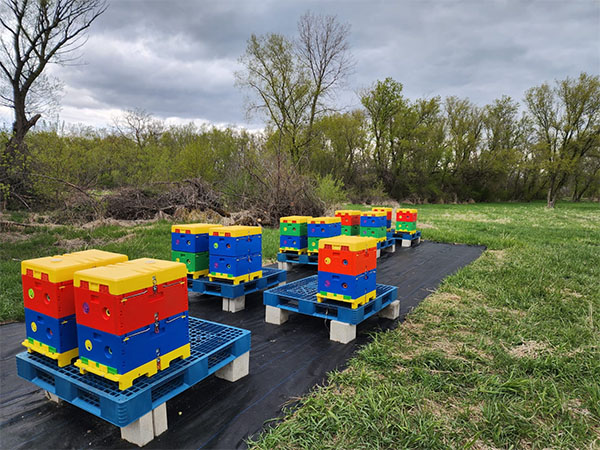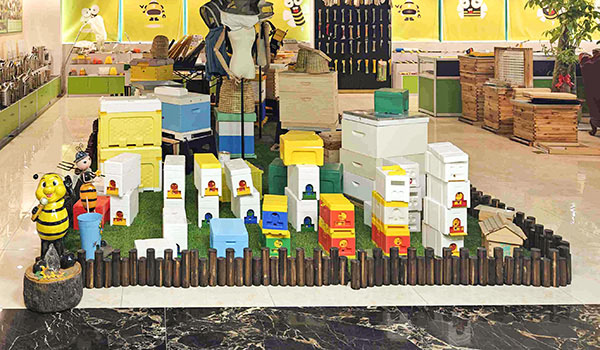Advantages of Plastic Beehives for Beekeeping
 Dec 24,2024
Dec 24,2024

 Lucia Ma
Lucia Ma
1. Material characteristics
Good durability
Plastic beehives are usually made of high-quality plastics, such as engineering plastics. This material has strong corrosion resistance and will not rot due to factors such as rain and moisture compared to traditional wooden beehives. For example, in a humid environment, wooden beehives may be damaged within a few years, while plastic beehives can be used for ten years or even longer.Plastic beehives are also more wear-resistant and will not be easily scratched, dented, or damaged like wooden beehives during daily handling, moving, and bee activities.

Strong portability
Plastic beehives are generally lighter than wooden beehives of the same specifications. This makes it more convenient for beekeepers to move the beehives, especially in large apiaries where the layout of the beehives needs to be adjusted frequently. For example, a standard wooden double-box beehive may weigh dozens of kilograms, while a plastic beehive may only weigh half of it, making it easier for one person to carry and operate.
Good thermal insulation performance
Plastic itself is a poor conductor of heat, which makes plastic beehives have certain thermal insulation properties. In low temperature environments, such as early spring or late autumn, it can better maintain the temperature inside the beehive and provide a relatively warm environment for the bees. Moreover, plastic beehives can be further improved through special designs, such as adding insulation layers, to improve their thermal insulation effect, which is conducive to the reproduction and survival of bees.
Excellent waterproof performance
The plastic material itself has good waterproof performance. Rainwater and dew on the outside of the beehive will not penetrate into the inside of the beehive, and the internal environment of the beehive can always be kept dry. This is very important for the health of bees, because a humid environment is prone to breed harmful microorganisms such as bacteria and mold, affecting the growth of bees and the quality of honey.
2. Bee breeding management
Easy to clean and disinfect
The surface of the plastic beehive is relatively smooth, without the texture and gaps of wood. This makes it easier to clean impurities such as beeswax and propolis inside the beehive. When disinfecting the beehive, it can also be more thorough. For example, when using disinfectants to spray or soak the plastic beehives for disinfection, the disinfectants can better cover the surface of the beehives, kill various germs and parasites, and effectively prevent the spread of bee diseases.

Unified specifications, easy to combine and use
Plastic beehives are generally formed by molds, so the specifications are relatively standard and unified. In the beekeeping process, different boxes can be easily combined and used, such as stacking supers. Moreover, unified specifications are also conducive to the mass production and replacement of beehives. Beekeepers can more easily obtain suitable accessories to repair or upgrade beehives.
Good anti-ant and anti-insect effect
Due to the special material of plastic beehives, it is difficult for ants and borers to cause damage to them. Unlike wooden beehives that are easily invaded by ants and eaten by borers, plastic beehives can effectively prevent these pests from entering the beehives and interfering with the lives of bees, thus creating a relatively safe habitat for bees.




 Tel:
Tel:

 Home
Home How do you know if there is a wild bee nest nearby?
How do you know if there is a wild bee nest nearby?  You May Also Like
You May Also Like







 Tel
Tel
 Email
Email
 Address
Address







